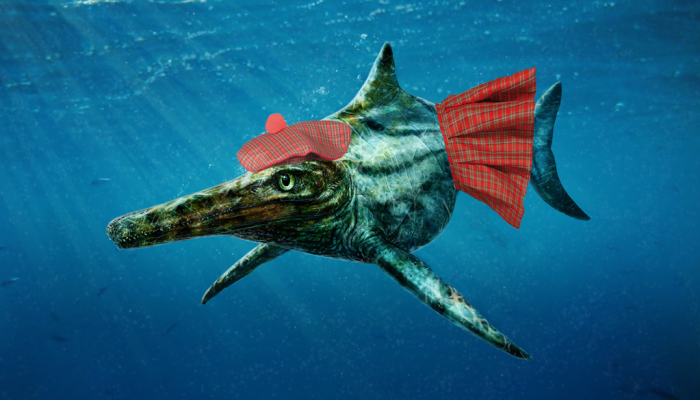Close your eyes. Go back in time 250 million years, and the world would seems as strange to you as a different planet. On land, there was a whole host of bizarre and now extinct animals: strange, crocodile-like things, and the precursors of dinosaurs; weird mammal-like beasts, that looked like the lost offspring of a hippo and a monitor lizard.
In the seas, marine reptiles dominated. A whole range of unusual animals lived, such as the long-necked plesiosaurs, popularised with reference to the mythical Loch Ness monster. Alongside these were the equally unusual ichthyosaurs. At first glance, a typical one might look like to you much like a dolphin.


